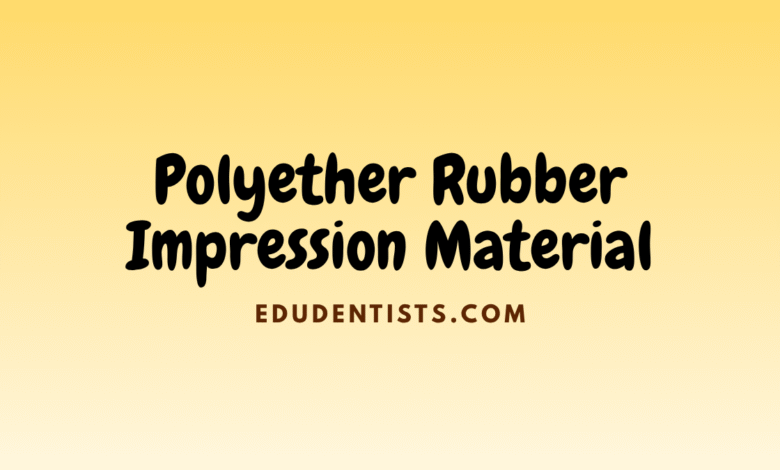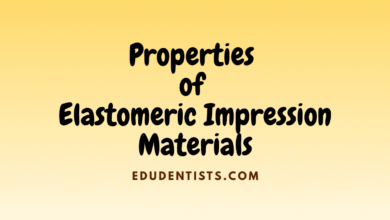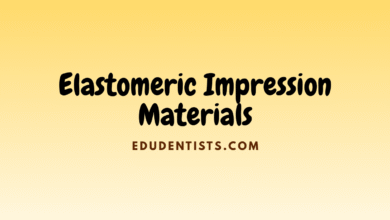
Polyether Rubber Impression Material
Polyether Rubber Impression Material
Polyether impression materials were introduced in Germany in the late 1960s. They are known for their excellent mechanical properties and dimensional stability, but they are also stiff, have a short working time, and are relatively expensive.
Packaging
- Supplied as base and accelerator in collapsible tubes
- Accelerator tube is smaller
- Initially available in a single viscosity with a third thinner tube
- Now available in:
- Light body
- Medium body
- Heavy body

Common Brands
- Impregum F (Premier)
- Ramitec
- Polyjel (Dentsply)
Composition
| Component | Base | Accelerator |
|---|---|---|
| Polymer | Polyether polymer | Aromatic sulfonate ester (crosslinker) |
| Additives | Colloidal silica (filler), plasticizer | Colloidal silica, phthalate or glycolether |
Setting Reaction
- Involves crosslinking of aziridine rings in branched polyether chains
- Catalyzed by aromatic sulfonate ester
- The main polymer chain consists of ethylene oxide and tetrahydrofuran
- Exothermic reaction with a 4–5°C rise in temperature
Properties
- Pleasant odor and taste
- Sulfonic ester can irritate the skin
- Avoid direct contact; mix thoroughly
- Setting time: 6–8 minutes
Mixing time: 30 seconds- Heat reduces setting time
- Excellent dimensional stability
- Low curing shrinkage (0.24%)
- Low permanent deformation (0.8–1.6%)
- However, polyethers absorb water
- Avoid prolonged exposure to moisture or humid environments
- Very stiff (flexibility ~3%)
- Harder than polysulfides
- 4 mm tray spacing recommended
- Removing impressions from undercuts is difficult—handle with care
- Good tear strength (3000 g/cm)
- Hydrophilic
- Performs well in moist environments
- Best compatibility with stone among all elastomers
- Electroplatable with silver or copper
- Shelf life: Excellent—over 2 years
- High accuracy: Detail reproduction up to 20 microns
⚠️ Caution: Impression materials may be inhibited by chemicals in retraction cords (e.g., epinephrine, iron sulfate).
Prolonged exposure can lead to surface stickiness due to depolymerization.
Manipulation of Polyether Rubber Impression Material
Paste Form
- Usually supplied in two tubes (base and accelerator), with a third thinner sometimes included to adjust viscosity.
- The catalyst amount is small, and ratio is displayed on the mixing pad.
- Mix the base and accelerator using a spatula for 30 seconds.
- The material must be handled quickly due to short working time.
- If thinner is provided, it should be added to modify viscosity based on clinical needs.
Automatic Mixing (Optional)
- Some polyether materials may also be available in cartridges compatible with automix dispensers for precision and consistency.
Note: Polyether is very stiff, requiring 4 mm of tray spacing, and should be used with care when removing from undercuts.




